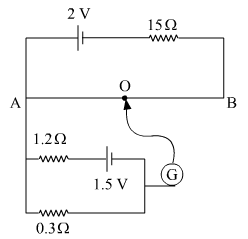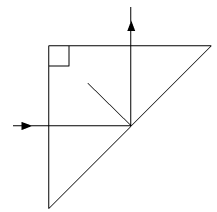 Short Answer Type
Short Answer Type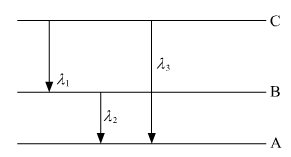
 Long Answer Type
Long Answer Type(i) An a.c. source of voltage V = Vo sin ωt is connected to a series combination of L, C and R. Use the phasor diagram to obtain an expression for impedance of a circuit and the phase angle between voltage and current. Find the condition when current will be in phase with the voltage. What is the circuit in this condition called?
ii) In a series LR circuit, XL = R and the power factor of the circuit is P1. When capacitor with capacitance C, such that XL = XC is put in series, the power factor becomes P2. Calculate P1 / P2.
(i) Write the function of a transformer. State its principle of working with the help of a diagram. Mention various energy losses in this device.
(ii) The primary coil of an ideal step-up transformer has 100 turns and the transformation ratio is also 100. The input voltage and power are 220 V and 1100 W, respectively. Calculate the:
a) number of turns in secondary
b) current in primary
c) voltage across secondary
d) current in secondary
e) power in secondary
(i) Define the term drift velocity.
(ii) On the basis of electron drift, derive an expression for resistivity of a conductor in terms of number density of free electrons and relaxation time. On what factors does resistivity of a conductor depend?
(iii) Why alloys like constantan and manganin are used for making standard resistors?
i)
Drift velocity is the average velocity of the free electrons in the conductor with which they get drifted towards the positive end of the conductor under the influence of an external electric field.
ii)
Free electrons are in continuous random motion. They undergo change in direction at each collision and the thermal velocities are randomly distributed in all directions. ![]()
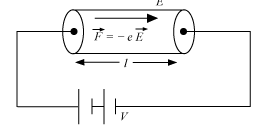
Electric field, E = -eE
Acceleration of each electron, ![]() ... (2)
... (2)
Here,
m = mass of an electron
e = charge on an electron
Drift velocity is given by, ![]()
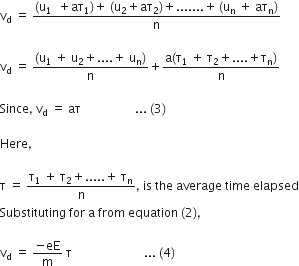
Electrons are accelerated because of the external electric field.
They move from one place to another and current is produced.
For small interval dt, we have
I dt = -q ; where q is the total charge flowing
Let, n be the free electrons per unit area. Then, total charge crossing area A in time dt is given by,
Idt = neAvd dt
Substituting the value of vd, we get
I.dt = neA ![]()
Current density, J = ![]()
From ohm's law, we have
J = ![]()
Here, ![]() is the conductivity of the material through which the current is flowing,
is the conductivity of the material through which the current is flowing,
Thus, 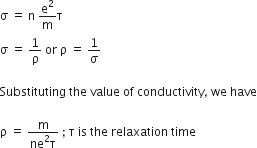
iii)
Alloys like constantan and manganin are used for making standard resistors because:
a) they have high value of resistivity
b) temperature coefficient of resistance is less.
